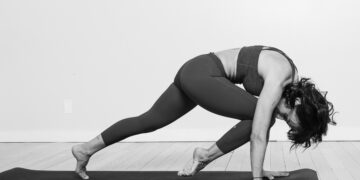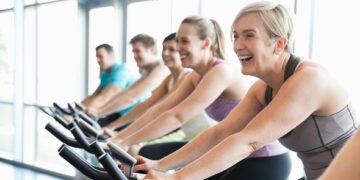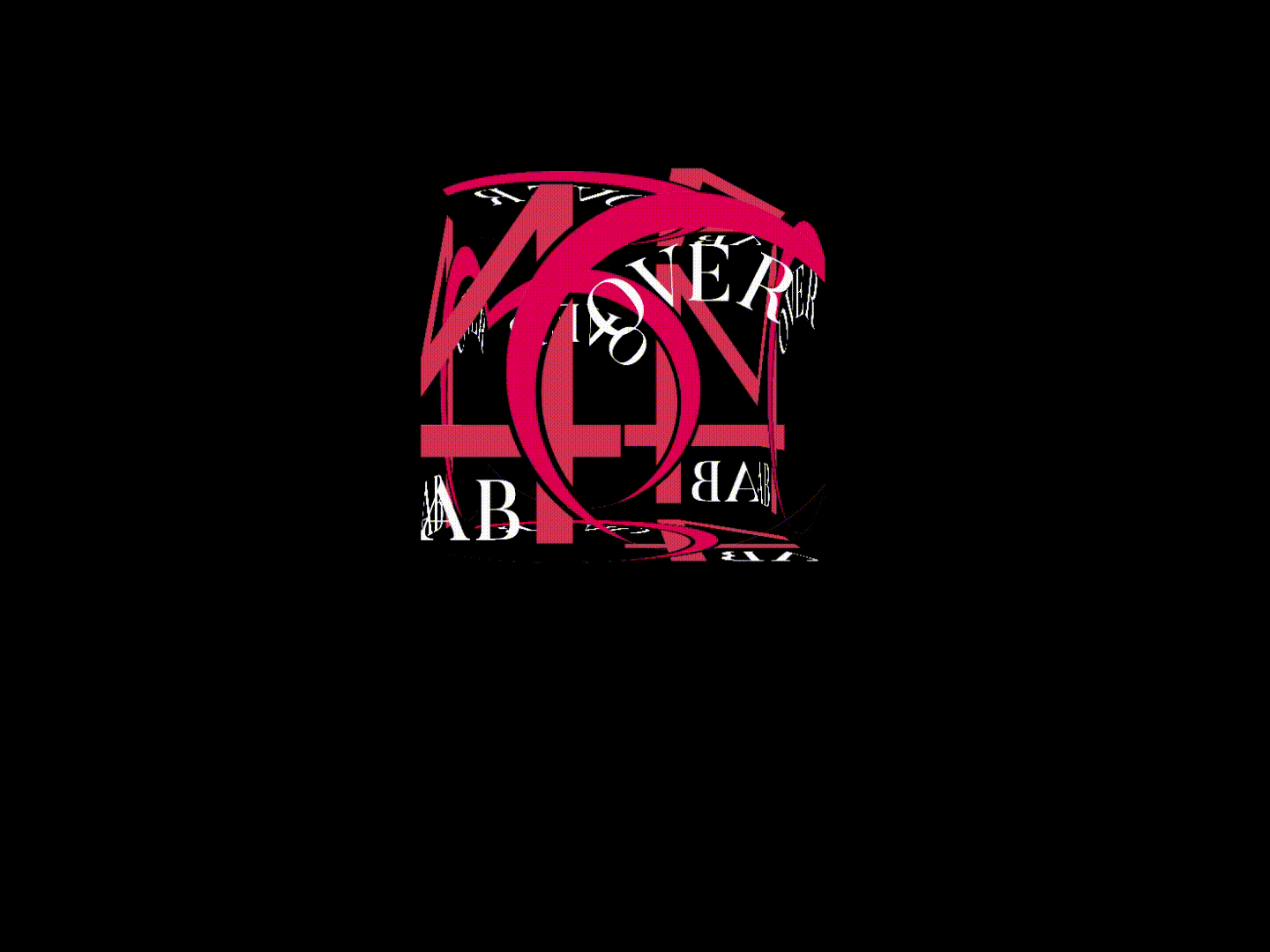A few tweaks to your routine can take your glutes from flat and tired to rounded and ready to support you in all that you do. Build strong glute muscles.

“You’ve got a BIG butt!”
It was about 1973, so they probably didn’t say ‘butt,’ but that’s all my 57-year-old brain remembers! I was a cute and innocent eight-year-old, dancing with a group of other cute and innocent kids at a neighbourhood party. We danced in a circle back then – not sure why – with the parents drinking beer and vino and watching from the sidelines. I thought I was totally nailing my hip-shaking dance moves. Until that crushing comment.
I can’t even remember who said it. But I do remember looking around and feeling like everyone, even the parents, was laughing at me – and my supposedly enormous hip-shaking booty.
Well, that innocent but soul-destroying comment has stuck with me my whole life. Ludicrous, really. A single comment from when I was a child amongst all the positive, kind compliments I’ve got over my life, and I’ve chosen to fixate on that negative one. One that made me super self-conscious about dancing, and I love dancing! There’s probably a therapy session in there somewhere.
So began a lifetime of analyzing what my butt looked like in every outfit, examining myself in all angles in the mirror before leaving the house, and training hard, trying to diminish the size and shape of my glutes. Then at 50, I started wondering: where the hell did my bountiful butt go?!
Genetics and aging play a part in having ‘flat butt’ issues. Your genes determine the general shape of your butt, and aging depletes the fullness. When you’re in your child-bearing years, your estrogen levels help you store fat in your butt, giving it a perky, full appearance! As you age, the hormonal changes of menopause cause lower levels of estrogen – which takes that lovely, full butt away!
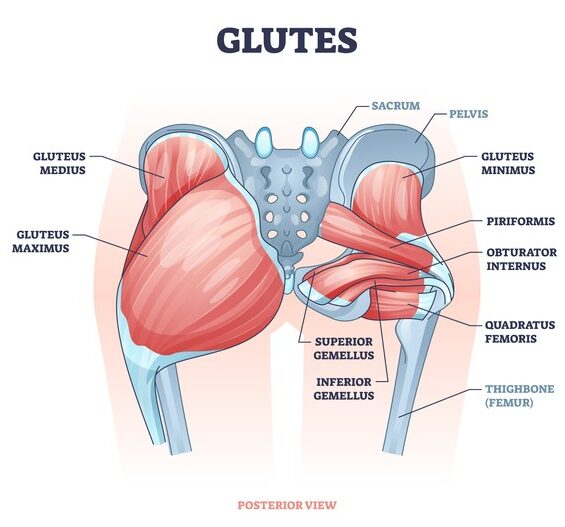
Training Your Core Properly
Your glutes (butt, derrière or whatever you like to call them) form part of your core muscles. They play a big part in how you move and sit, your posture and whether you end up with nagging knee, hip and back issues.
There are three parts to this powerful muscle group:
- Gluteus minimus (close to the hip joint)
- Gluteus medius (overlays the gluteus minimus and covers the outer area of the pelvis)
- Gluteus maximus (the meaty part overlaying the gluteus medius and minimus, this muscle is what gives the butt its distinctive shape)
Role of Strong Glute Muscles in Body Support
 Among other crucial things, all three are responsible for supporting your pelvis and stabilizing your hip joint, allowing the hip to move and glide freely. Numerous social media posts and magazines talk about building strong glute muscles but tend to focus on what your butt muscles look like. In the over-50 age bracket, how we look is not always top of the list anymore – focusing on what these powerful and essential glute muscles do is often more important to us.
Among other crucial things, all three are responsible for supporting your pelvis and stabilizing your hip joint, allowing the hip to move and glide freely. Numerous social media posts and magazines talk about building strong glute muscles but tend to focus on what your butt muscles look like. In the over-50 age bracket, how we look is not always top of the list anymore – focusing on what these powerful and essential glute muscles do is often more important to us.
These glute muscles give you the power you need to hold your body up as gravity tries to pull it the other way. Starting to slouch? Look at your glutes!
They’re also the protectors of your hip joints. Without that protection, your hips are in for a whole lot of achy, grinding times ahead! They even support your pelvis: if they’re weak and not firing up, your pelvic floor is affected.
If you’ve got any of the following, a good physical therapist will always look at your glutes first:
- A stiff, sore lower back
- Uncomfortable, achy knees
- Pelvic floor issues
- Ongoing neck and shoulder tightness (NOTE: These two can often, but not always, relate to your lower back, which in turn relates to your glute muscles. Every muscle is interconnected!)
 Sitting on Tired Butt Muscles
Sitting on Tired Butt Muscles
One thing is for sure: we all sit too much! It’s thanks to the staring-at-the-screen world we live in, which probably won’t be changing anytime soon.
Endless sitting causes your hip flexor muscles to tighten and your glute muscles to lengthen and weaken, giving you what I call sleepy butt muscles. This is a problem as you age. You need these muscles strong and turning off and on as needed.
Sleepy butt muscles will change your posture by affecting the alignment of your spine. This extends to whether your head is correctly stacked over your shoulders, hips and feet. Every part of your body is affected if your butt muscles get sleepy, and it’s all negative! But you can rectify it with some targeted glute work.
An arthritic hip issue at 53 made me have a good look at how I was training these muscles. Go too hard on them and have them ‘gripping’ all the time, and you end up causing more hip and lower back issues, particularly in this age bracket.
I started designing my routines around, targeting the three-part glute muscle group at all angles, in different sequences and in as many ways as possible. This method ensures these muscles switch on and off as needed, with exercise sequences that wouldn’t wreck me!
Consistent Glute Work for Age-Related Issues
Remember to perform consistent, targeted glute work in your training sessions, and you’ll fix many of the body and joint issues this age bracket throws at you! But even more importantly: make sure you work all three muscles of your glutes, since they all play a part. And if you’re stuck for ideas, grab my free Flat Butt and Hip Strengthening Sequence! It will be the best five minutes of your day, and your butt, achy hips and posture will love you for it!


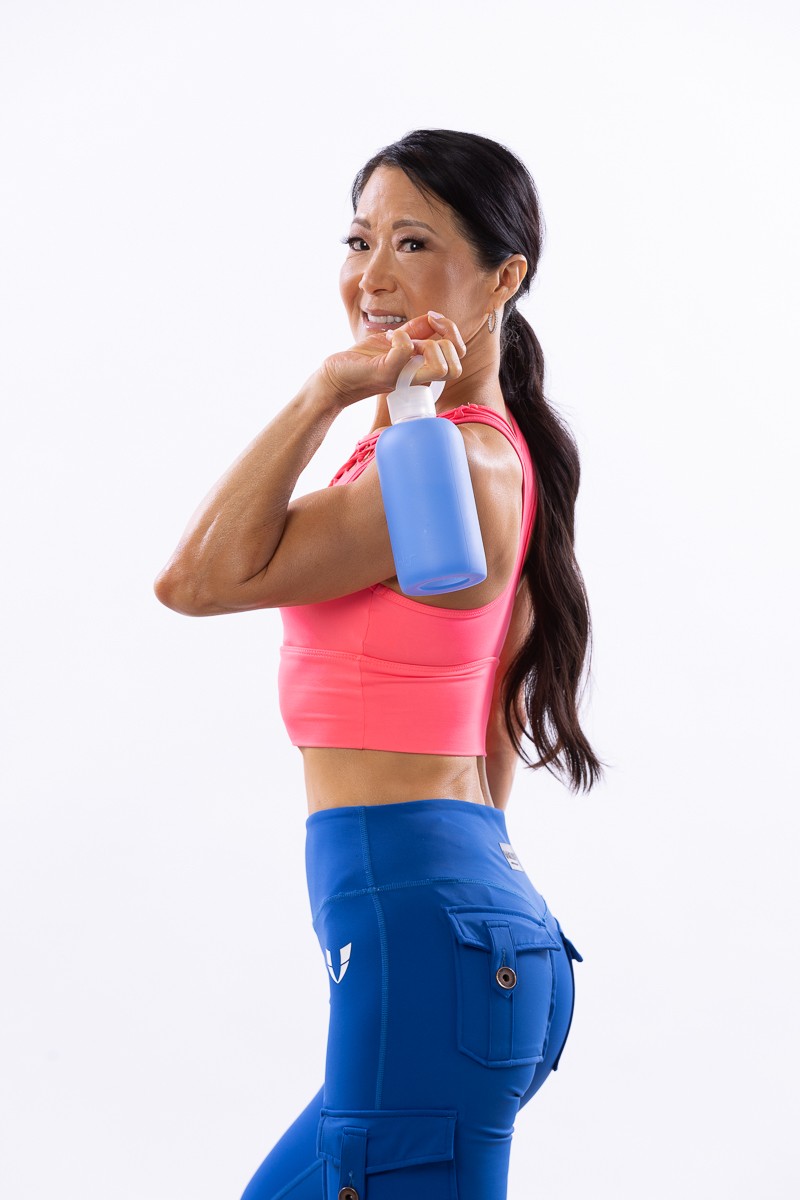 Sitting on Tired Butt Muscles
Sitting on Tired Butt Muscles





